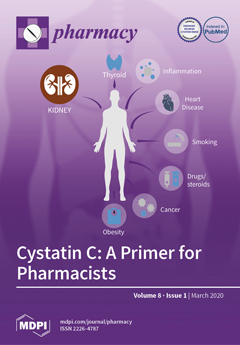Open AccessCommentary
The COPHELA (Cooperation in Quality Assurance for Pharmacy Education and Training between Europe and Latin America) Project
by
Antonio Sánchez-Pozo, Afonso Miguel Cavaco, Paolo Blasi, Mariana Ortiz Reynoso, Carlos Tomas Quirino-Barreda, Patricia Acuña Johnson, Fernando Torres Moscoso, Selma Rodrigues de Castilho, Claudia Fegadolli, Sergio Slan Zarwar, Jeffrey Atkinson and on behalf of the COPHELA Associated Partners
Viewed by 3537
Abstract
COPHELA (Cooperation in Quality Assurance for Pharmacy Education and Training between Europe and Latin America), a collaborative project between the European Union (EU) and Latin America, will produce on-line courses for the master degree in pharmacy. The program runs from 2019 through 2021.
[...] Read more.
COPHELA (Cooperation in Quality Assurance for Pharmacy Education and Training between Europe and Latin America), a collaborative project between the European Union (EU) and Latin America, will produce on-line courses for the master degree in pharmacy. The program runs from 2019 through 2021. It is funded by the Erasmus+ program of the Education, Audio-visual and Culture Executive Agency (EACEA) of the European Commission. The partners are EU and Latin American universities. These are accompanied by associated partners from EU and Latin American universities, as well as from governmental and non-governmental organizations, such as pharmacy chambers and educational associations. The project is coordinated by the University of Granada, Spain (first author of this paper). It will produce distance learning master degree courses in a dozen fields of specialized pharmaceutical science education and practice, ranging from patient care to industrial pharmacy. This paper describes the design of the project and is intended to evoke constructive comments. It also represents a call for the recruitment of additional associated partners.
Full article
►▼
Show Figures





